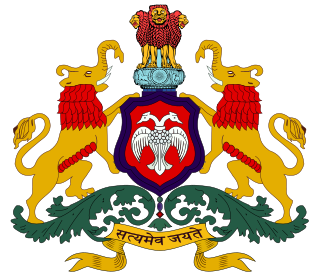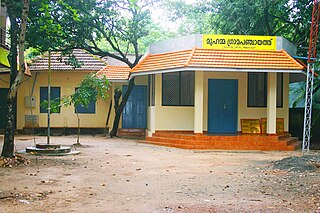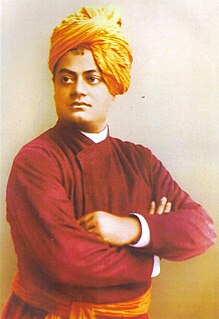Related Research Articles
E-government is the use of technological communications devices, such as computers and the Internet, to provide public services to citizens and other persons in a country or region. E-government offers new opportunities for more direct and convenient citizen access to government, and for government provision of services directly to citizens.
RDS may refer to:

A telecentre is a public place where people can access computers, the Internet, and other digital technologies that enable them to gather information, create, learn, and communicate with others while they develop essential digital skills. Telecentres exist in almost every country, although they sometimes go by a different names including public internet access center (PIAP), village knowledge center, infocenter, Telecottage, Electronic Village Hall, community technology center (CTC), community multimedia center (CMC), multipurpose community telecentre (MCT), Common/Citizen Service Centre (CSC) and school-based telecentre. While each telecentre is different, their common focus is on the use of digital technologies to support community, economic, educational, and social development—reducing isolation, bridging the digital divide, promoting health issues, creating economic opportunities, and reaching out to youth for example.
Electronic governance or e-governance is the application of IT for delivering government services, exchange of information, communication transactions, integration of various stand-alone systems between government to citizen (G2C), government-to-business (G2B), government-to-government (G2G), government-to-employees (G2E) as well as back-office processes and interactions within the entire government framework. Through e-governance, government services are made available to citizens in a convenient, efficient, and transparent manner. The three main target groups that can be distinguished in governance concepts are government, citizens, and businesses/interest groups. In e-governance, there are no distinct boundaries. finance and support.

The State Government of Karnataka is a democratically elected body with the governor as the constitutional head. The governor who is appointed for five years appoints the chief minister and on the advice of the chief minister appoints his council of ministers. Even though the governor remains the ceremonial head of the state, the day-to-day running of the government is taken care of by the chief minister and his council of ministers in whom a great amount of legislative powers are vested.

Panchayati Raj is the system of local self-government of villages in rural India as opposed to urban and suburban municipalities.
India celebrates October 17 as the Digital Society Day.
The Ministry of Panchayati Raj is a branch of the Government of India.

The water supply and sanitation in India has increased greatly from 1980 to present. Still, many people lack access to clean water, toilets, and sewage infrastructure. Various government programs at national, state, and community level have brought rapid improvements in sanitation and the drinking water supply. Some of these programs are ongoing.
Local government in India refers to governmental jurisdictions below the level of the state. India is a federal republic with three spheres of government: central, state and local. The 73rd and 74th constitutional amendments give recognition and protection to local governments and in addition each state has its own local government legislation. Since 1992, local government in India takes place in two very distinct forms. Urban localities, covered in the 74th amendment to the Constitution, have Nagar Palika but derive their powers from the individual state governments, while the powers of rural localities have been formalized under the panchayati raj system, under the 73rd amendment to the Constitution. For the history of traditional local goverict Councils of India|zila parishads]] at the district level, 6,672 were panchayat samitis at the block level, and 255,466 were gram panchayats at the village level. Following the 2013 local election, 37.1% of councillors were women, and in 2015/16 local government expenditure was 16.3% of total government expenditure.

The National e-Governance Plan (NeGP) is an initiative of the Government of India to make all government services available to the citizens of India via electronic media. NeGP was formulated by the Department of Electronics and Information Technology (DeitY) and Department of Administrative Reforms and Public Grievances (DARPG). The Government approved the National e-Governance Plan, consisting of 27 "Mission Mode Projects" (MMPs) and 8 components, on 18 May 2006. This is an enabler of Digital India initiative, and UMANG in turn is an enabler of NeGP.

India.gov.in is the Indian government’s web portal for citizens. It presents information resources and online services from government sources, accessible from a single point. It is also known as the National Portal of India.
Comat is an Indian social enterprise specializing in the delivery of information based services to rural citizens in India. It was founded in 1996 and currently has over 800 rural centers from which it serves over 75,000 citizens each day. In June 2011, Comat was acquired by Glodyn Technoserve, an IT services company headquartered in Mumbai, India. The company's prior investors included Omidyar Network, Avigo Capital and Elevar Equity.

Common Service Centres (CSC) are physical facilities for delivering Government of India e-Services to rural and remote locations where availability of computers and Internet was negligible or mostly absent. They are multiple-services-single-point model for providing facilities for multiple transactions at a single geographical location.
The Agriculture Mission Mode Project is one of the 27 Mission Mode Projects (MMPs) of the National e-Governance Plan of the Government of India. It is being run under the direction of the Department of Agriculture and Cooperation within the Ministry of Agriculture.

Swami Vivekananda Youth Movement (SVYM) is a development organization founded by a group of medicos led by Dr R Balasubramaniam based in Saragur near Mysore in the Indian state of Karnataka. The organization is engaged in building a new civil society in India through its grassroots to policy-level action in health, education and community development. They have been recognized by private and government bodies inside and outside of Karnataka. Their work in the field of AIDS prevention was recognized by the Indian government. They received awards such as the 'National Youth Award' from the Indian government, and the Mahaveer Award for work in Community and Social Service from the Mahaveer Foundation.
"Rajaolibanda Diversion Scheme" or "RDS" is an irrigation project located across River Tungabhadra in Jogulamba Gadwal district of Telangana, Kurnool district of Andhra pradesh and Raichur district of Karnataka. It is an inter-state barrage on the Tungabhadra river to supply water to Karnataka, Telangana and Andhra Pradesh states. The full reservoir level of this project is 332.32 m MSL.
BharatNet, also known as Bharat Broadband Network Limited, is a telecom infrastructure provider, set up by the Government of India under the Department of Telecommunications for the establishment, management, and operation of the National Optical Fibre Network to provide a minimum of 100 Mbit/s broadband connectivity to all 250,000 gram panchayats in the country, covering nearly 625,000 villages, to improve telecommunications in India and reach the campaign goal of Digital India. The last mile connectivity, with a total of 700,000 Wi-Fi hotspots to cover all 625,000 villages of India by adding 2 to 5 Wi-Fi hotspots per gram panchayat and a minimum of one Wi-Fi hotspot per village, have been created by connecting high-speed 4G base tower stations of commercial telecom operators to BharatNet, whereby commercially non-viable Wi-Fi hotspots will be subsidised by the union government grant of ₹36 billion to sustain the operation. The government has discounted the bulk BharatNet bandwidth rates to the commercial telecom operators by 76% to enable them to offer the highly discounted, affordable, competitive, and commercially viable BharatNet-enabled wireless cellular 4G broadband deals to the rural customers. The ₹450 billion union government share of funding will come from the Universal Services Obligation Fund of the Department of Telecommunications. It will be rolled out with the additional funding by state governments to connect all gram panchayats in India. BharatNet is the world's largest rural broadband connectivity program. It is built under the Make in India initiative with no involvement of foreign companies.

Digital India is a campaign launched by the Government of India in order to ensure the Government's services are made available to citizens electronically by improved online infrastructure and by increasing Internet connectivity or making the country digitally empowered in the field of technology. The initiative includes plans to connect rural areas with high-speed internet networks. Digital India consists of three core components: the development of secure and stable digital infrastructure, delivering government services digitally, and universal digital literacy.
S M Sehgal Foundation is an Indian NGO focused on rural development with its head office in Gurugram, Haryana. It was founded as an Indian public, charitable trust in 1999 by plant geneticist Suri Sehgal and his wife Mrs. Edda Sehgal, who together had accumulated wealth through the 1998 sale of their hybrid seed businesses, Proagro Group. The foundation implements rural development projects in semi-arid areas of districts in Haryana, Rajasthan, Bihar, Telangana, Uttar Pradesh, Andhra Pradesh, Karnataka, and Maharashtra in water resources management, agricultural productivity, and rural governance. Projects are supported by multiple sources, including individual donors, corporate sponsors, government grants, academic partnerships, and foundation funding. The organization's rural research unit conducts impact assessments and original research on development themes. Other units conduct crop research and adapt rural technologies to meet local needs.
References
- 1 2 3 Bussell, Jennifer (26 March 2012). Corruption and Reform in India: Public Services in the Digital Age. Cambridge University Press. ISBN 9781107019058.
- ↑ Das Aundhe, Madhuchhanda; Ramesh, Narasimhan (June 2013). "Case Study - NEMMADI, Karnataka". National E-Governance Division. Retrieved 19 January 2018.
- ↑ Hoque, Dr Shah Md Safiul. Public SectorsÕ E-Service Delivery for Rural Dwellers in Bangladesh: Perceptions and Sustainability. Lulu.com. ISBN 9781387638024.